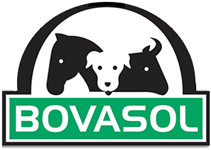Super Fibre for Healthy Horses
What is Eezi Fibre?
Eezi Fibre is a low carbohydrate, high energy super fibre feed, made from the toasted hulls of soya beans that can be used as a replacement for roughage or grains in conditioning feeds for horses. Super fibres are ingredients which are high in fibre but also high in energy due mainly to the low lignin content and high digestibility of the fibre fraction. The digestible energy in these super fibres is commonly about one and a half times that of conventional grass hay, so they offer a healthy, low carbohydrate energy alternative to high starch grains. An extra benefit of Eezi fibre is the amount and quality of its protein. Eezi Fibre can typically contain 15% protein with a well balanced amino acid profile, rich in essential amino acids including lysine, methionine and threonine.
Why replace grains with Eezi Fibre?
Traditionally grains have been used to provide extra energy to working horses, but overloading the small intestines capacity to digest carbohydrates from grains results in these carbohydrates entering the large intestine and being exposed to fermentation there. This fermentation causes a decrease in hindgut pH (an increase in hindgut acidity), which may lead to a condition called acidosis a precursor to many metabolic conditions including colic, laminitis, tying up and colonic ulceration, as well as contributing to behavioural issues. Replacing a portion of the grain feed with Eezi Fibre will improve hind gut health without compromising energy supply.
Why replace hay with Eezi Fibre?
Eezi Fibre can supply up to 75% of roughage requirements. This is useful for old horses where dentition is comprised, for convalescing horses where soft, digestible feeds which increase hindgut biomass are required, and for times of drought, when hay is hard to come by, of low quality and expensive. Eezi Fibre is also a low carbohydrate alternative to fructan rich grasses for horses at risk of laminitis.
How much Eezi Fibre can I feed?
Eezi Fibre can be fed as a supplement to a feed, or as a full feed, so there is no specific answer to the question of how much to feed. Eezi Fibre can practically be fed at rates of 2.5 kg per horse per day or even more. Some of the more common applications of Eezi Fibre are:
- Use as a partial to full replacement for high grain meals, without compromising protein supply and quality*
- Use as a feed bulker 100% or more of the weight of the grain diet can be added to bulk up each feed.
- Eezi Fibre will absorb its volume in water when soaked so it is also useful to assist rehydration of competition horses. Because of its water holding capacity, the presence of Eezi Fibre in the GIT will assist in the maintenance of hydration during long duration competition like endurance riding
- Eezi Fibre can replace half of the concentrates in hard working horses on rest days. Because of its low carbohydrate content, replacing concentrates on rest days will reduce the risk of tying up when work recommences
- Use as a soft nutrient source for horses recovering from surgery or illness
- Use as a base of a low carbohydrate diet for horses prone to laminitis, or those with PSSM or EMS
- Use as a carrier for supplements for easy-keepers or grass fed horses
- Use to maintain condition in horses with compromised dentition.
- Use to assist in transition from high grain diets in OTTBs
- Soak with hot water to use as a warming mash Eezi Fibre is well balanced in macro-minerals so will not have the detrimental effects associated with bran mashes.
- Use as a conditioner for thin horses
Eezi Fibre can be fed wet or dry, but due to its ability to expand when wet, when feeding large quantities of Eezi Fibre it would be advisable to feed it wet. Eezi fibre expands quickly so it is ready to feed in a minute.
*Eezi Fibre does not contain additional vitamins or trace elements. It is advisable to consult with a qualified nutritionist for specific supplementation recommendations

